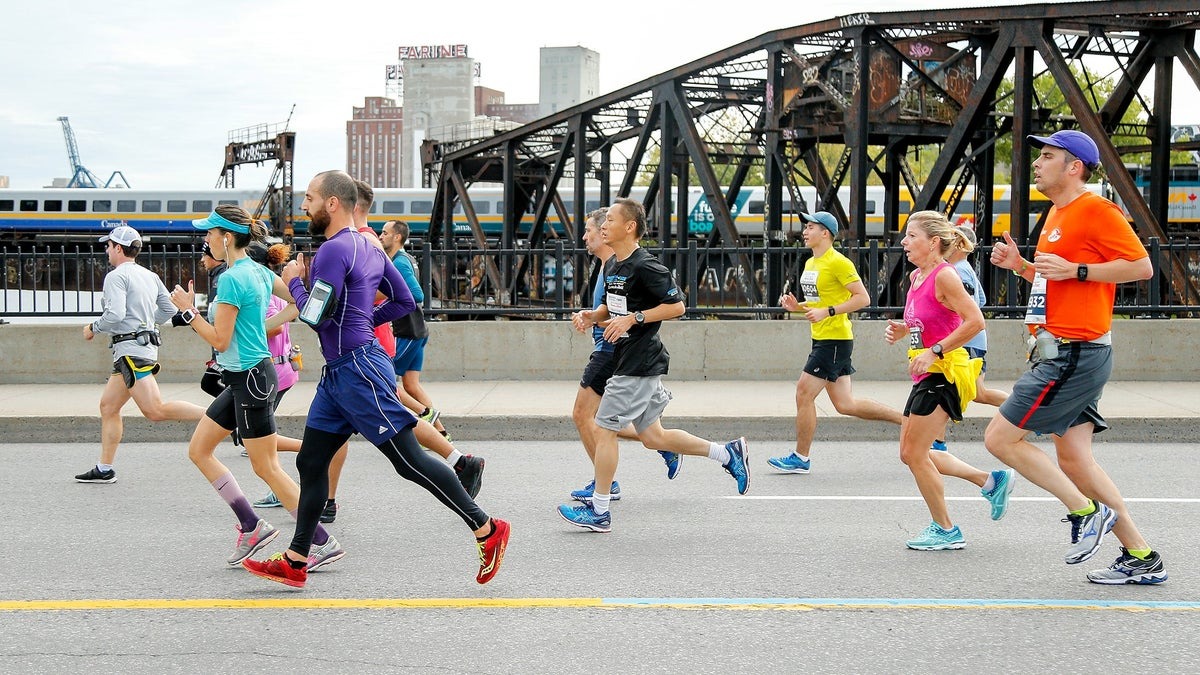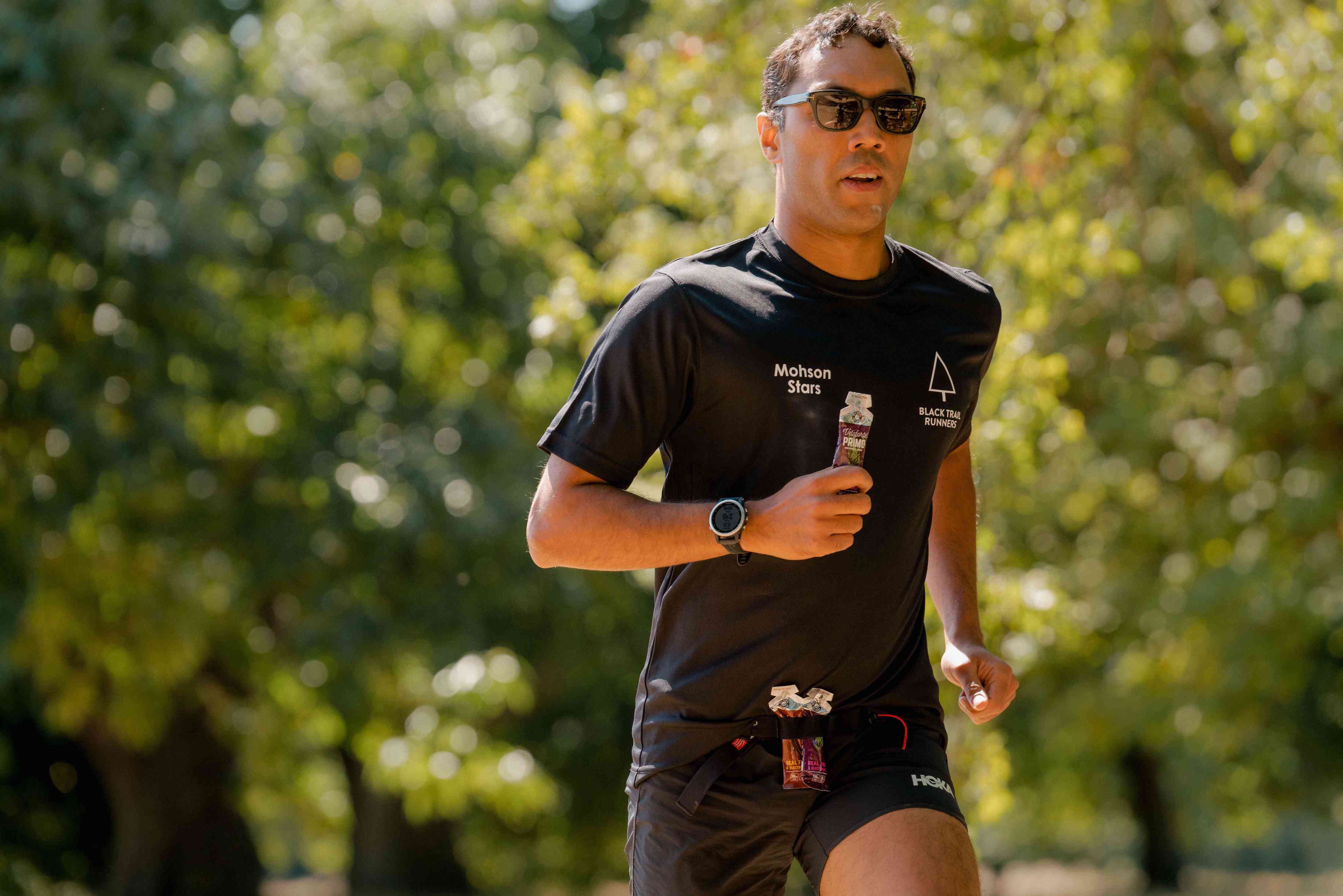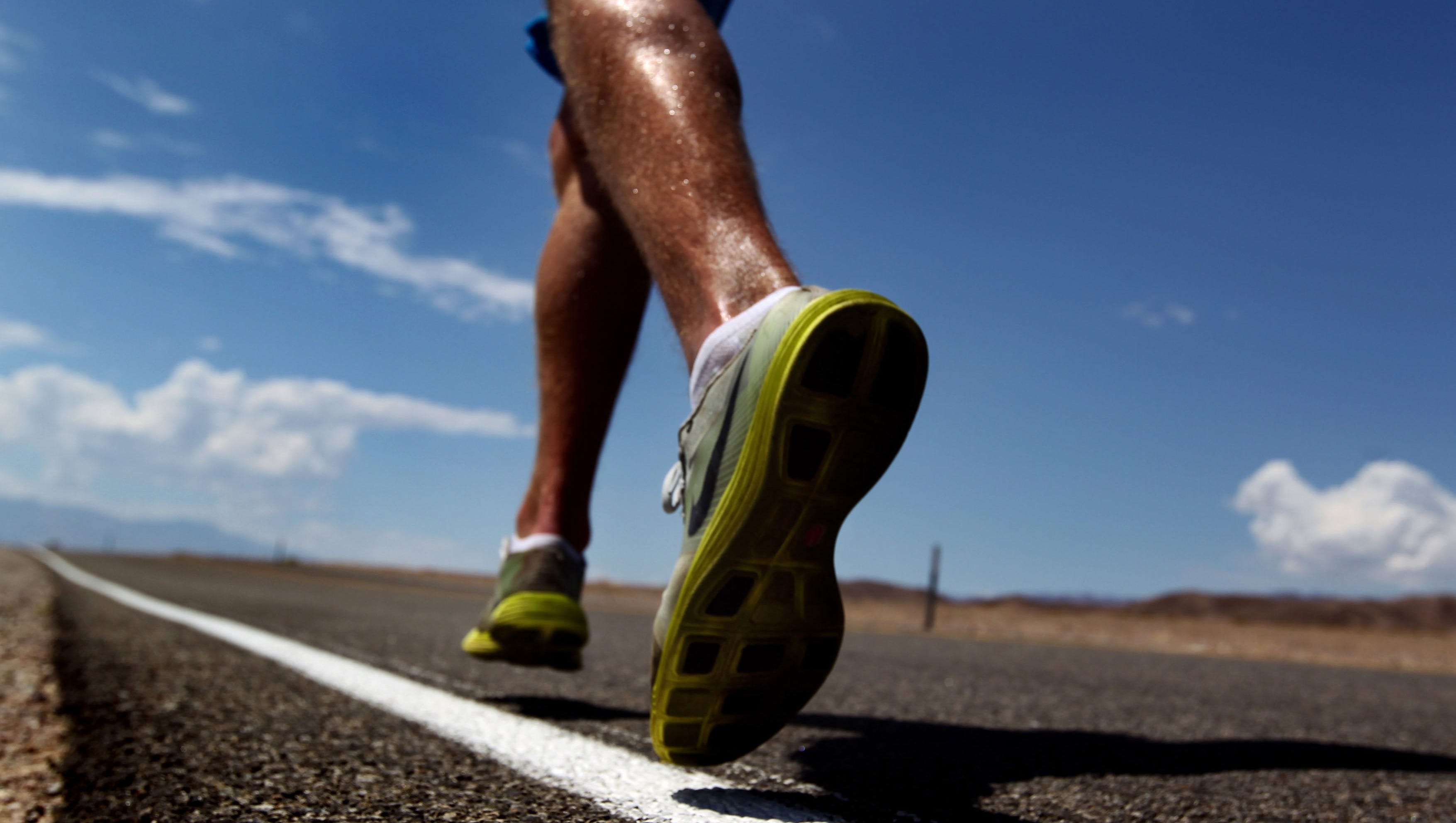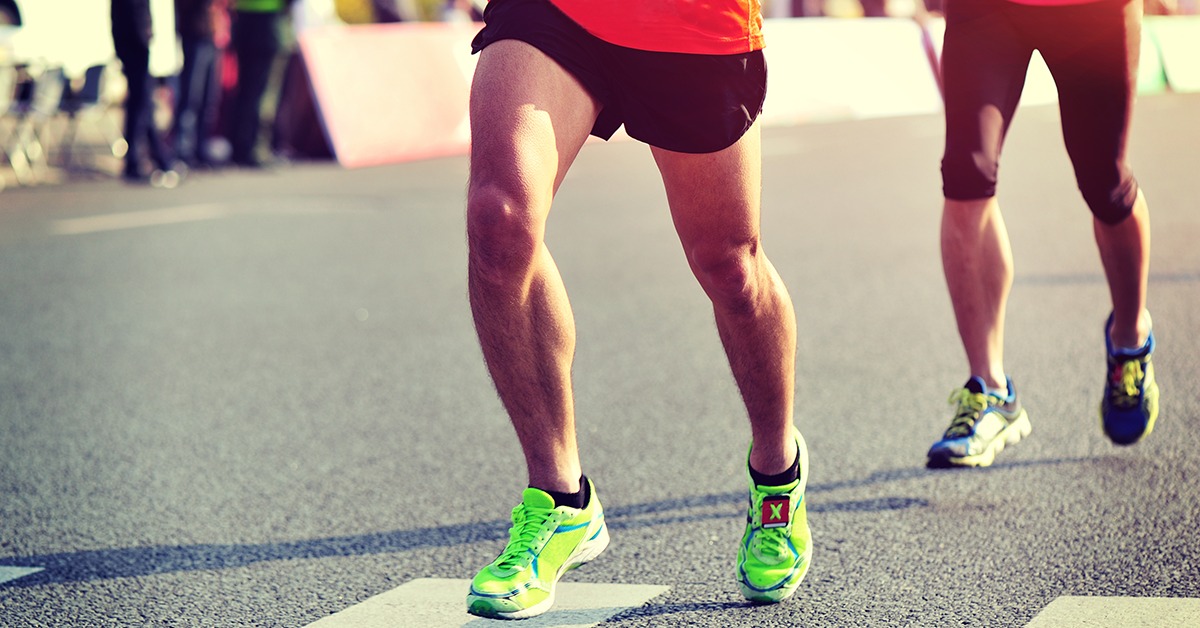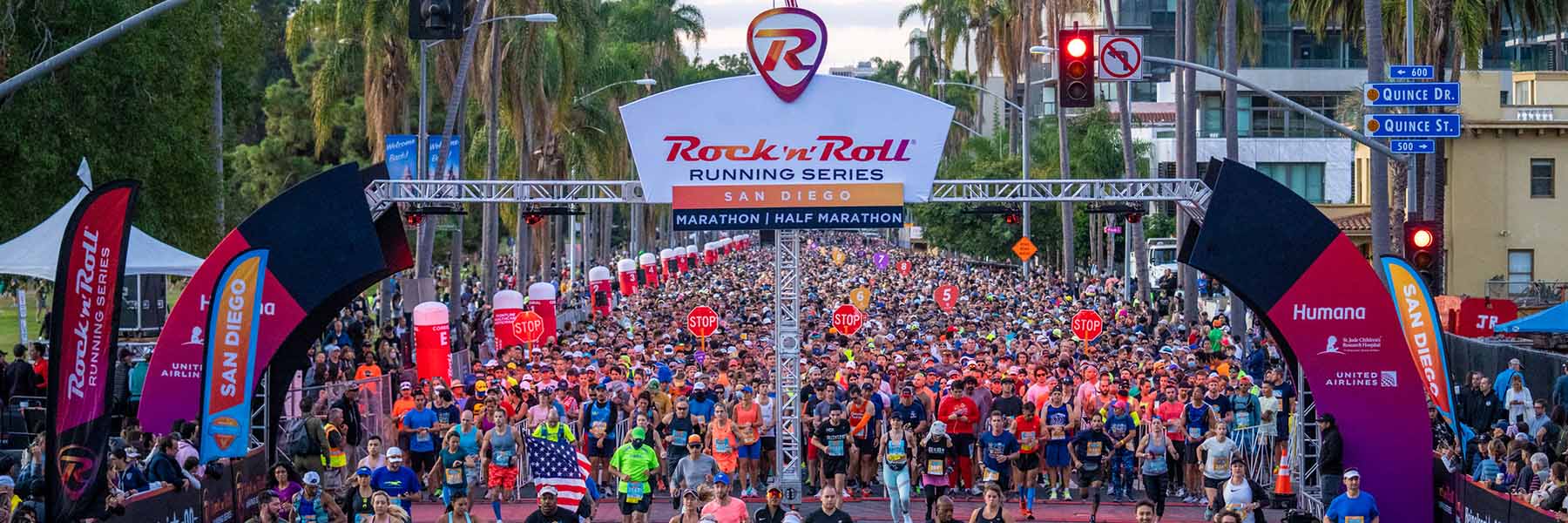Home>Misc>Featured>How To Run Half Marathon Without Training


Featured
How To Run Half Marathon Without Training
Modified: January 2, 2024
Discover the secrets of running a half marathon without any training. Our featured guide will help you cross the finish line successfully.
Introduction
Running a half marathon is a monumental feat that requires months of dedicated training and preparation. However, there may be situations where you find yourself signed up for a half marathon with little to no training under your belt. While it is always recommended to train properly before tackling such a challenge, there are instances where you might have to run a half marathon without proper preparation. This article will explore the benefits and risks of running a half marathon without training, as well as provide tips and strategies to help you get through the race safely.
Running a half marathon without training is not an ideal scenario, as the lack of preparation can put a significant amount of stress on your body. Training is essential to condition your muscles, cardiovascular system, and increase endurance. However, life can throw unexpected curveballs, such as a last-minute race invitation or personal commitments that lead to a lack of time for training. In these situations, it’s important to approach the race with caution and prioritize your health and safety.
Running a half marathon without training can still be a rewarding experience, but it’s essential to understand the potential risks involved. Pushing your body beyond its limits can lead to injuries, both short-term and long-term. However, with the right mindset, realistic expectations, and proper race day strategies, you can still complete the race and feel proud of your accomplishment.
This article will provide guidance on how to mentally prepare for the half marathon, set realistic expectations, and highlight the importance of proper nutrition and hydration. We will also discuss warm-up exercises and stretches that can help minimize the risk of injury. Plus, we will share race day tips and strategies to help you tackle the race smartly. Additionally, we will cover common injuries that can occur and how to avoid them. Finally, we will provide recommendations for recovery and post-race care to ensure your body recovers effectively.
Remember, running a half marathon without proper training is a challenge, but it is not impossible. With the right approach and mindset, you can overcome the obstacles and cross that finish line. So, lace up your running shoes, get ready for an adventure, and let’s dive into the world of running a half marathon without training!
Benefits of Running a Half Marathon without Training
While running a half marathon without proper training may not be the ideal way to approach the race, there are some potential benefits that can arise from this unique challenge. Let’s take a closer look at these benefits:
- Mental Toughness: Running a half marathon without training pushes you out of your comfort zone and tests your mental strength. It requires you to dig deep and find the motivation to keep going, even when your body is tired and fatigued. This experience can help build resilience and mental toughness that can be applied to other areas of life as well.
- A Sense of Accomplishment: Crossing the finish line of a half marathon, especially without training, can give you an immense sense of accomplishment and pride. Knowing that you pushed through physical and mental barriers to complete the race can be a powerful motivator and boost your self-confidence.
- Confidence Booster: Running a half marathon without training can serve as a confidence booster. It shows you that you are capable of pushing your limits and achieving goals, even when faced with challenges. This newfound confidence can transfer to other aspects of your life, helping you tackle obstacles with a positive mindset and belief in your abilities.
- Unique Experience: Running a half marathon without training offers a different perspective and experience compared to following a structured training plan. The spontaneity of the race and the unknown challenges you may face can make the experience more exciting and memorable. It adds an element of adventure to the race that can be rewarding in its own way.
- Learn About Your Body: Running a half marathon without training can teach you a lot about your body’s endurance and capabilities. It can help you understand how your body reacts under stress and what limits you can push it to. This self-awareness can be valuable for future training and races.
While there are some potential benefits of running a half marathon without training, it’s important to remember that these should not be the reasons to skip proper training. These benefits are more of a silver lining that can arise from the unique challenge of running a race underprepared. Proper training and preparation still remain the ideal approach for a half marathon to prioritize your safety and reduce the risk of injuries.
Risks of Running a Half Marathon without Training
Running a half marathon without proper training poses several risks to your physical and mental well-being. It’s important to understand these risks before attempting such a challenge. Here are the potential risks of running a half marathon without training:
- Injury: One of the biggest risks of running a half marathon without training is the increased likelihood of sustaining an injury. Without proper conditioning and strengthening exercises, your muscles, tendons, and ligaments may not be prepared to handle the stress of a long-distance run. This can lead to various injuries, including sprains, strains, stress fractures, and muscle tears.
- Muscle Fatigue and Soreness: Running a half marathon without training can put excessive strain on your muscles, leading to severe fatigue and soreness during and after the race. Overworked muscles may struggle to recover effectively, prolonging the soreness and potentially affecting your daily activities.
- Cardiovascular Stress: Running a half marathon without proper training can significantly stress your cardiovascular system. Pushing your heart and lungs to their limits without sufficient endurance training can increase the risk of cardiovascular complications, such as elevated blood pressure, irregular heart rhythms, and even heart attacks in extreme cases.
- Mental Exhaustion: Without the proper mental preparation and endurance training, running a half marathon can take a toll on your mental well-being. The lack of training may lead to increased mental fatigue, reduced motivation, and even negative thoughts or doubts during the race. This can negatively impact your overall race experience and make it mentally challenging to complete the distance.
- Longer Recovery Time: Running a half marathon without training can result in a longer recovery time post-race. Your body may require additional time to heal and repair the damage caused by the excessive stress on untrained muscles and tissues. This extended recovery period may disrupt your regular training routine or other physical activities.
It’s crucial to acknowledge and understand these risks and weigh them against your desire to run the half marathon without proper training. It’s also essential to consult with a healthcare professional or experienced trainers to assess your fitness level and discuss any potential risks or limitations.
Please note that the risks associated with running a half marathon without training can be mitigated by adopting smart strategies, focusing on safety, and listening to your body during the race.
Preparing Mentally for the Half Marathon
Running a half marathon without proper training requires not only physical strength but also mental preparedness. The following tips will help you get into the right mindset for the race:
- Visualize Success: Spend time visualizing yourself successfully completing the half marathon. Imagine yourself crossing the finish line, feeling a sense of accomplishment, and envisioning how proud you will be. Visualizing success can help boost your confidence and motivation.
- Positive Self-Talk: Use positive self-talk to overcome doubts and negative thoughts. Replace negative statements with positive affirmations such as “I am strong,” “I can do this,” and “I am capable of finishing the race.” Adopting a positive mindset can help you stay focused and motivated throughout the race.
- Break It Down: Instead of focusing on the entire distance, break the race down into smaller milestones or checkpoints. Mentally divide the race into segments, such as miles or kilometers, and celebrate each milestone as you reach them. This approach can make the race feel more manageable and less overwhelming.
- Embrace the Challenge: Recognize that running a half marathon without training is a unique challenge. Accept that it will be tough, but also embrace the opportunity to push your limits and discover your inner strength. Viewing the race as a personal challenge rather than a race against others can help alleviate unnecessary pressure.
- Find Motivation: Identify what motivates you during runs and use that as a source of inspiration. It could be listening to upbeat music, dedicating the race to a loved one, or running for a cause that is meaningful to you. Having a clear motivation can help keep you focused and motivated when the going gets tough.
- Practice Mindfulness: Incorporate mindfulness techniques, such as deep breathing or meditation, into your race preparation. Mindfulness can help calm your mind, reduce anxiety, and stay present during the race, enabling you to better manage any discomfort or fatigue.
Remember that mental preparation is just as important as physical training when running a half marathon without proper training. By adopting these strategies and focusing on building a resilient mindset, you can increase your chances of successfully completing the race while enjoying the experience along the way.
Setting Realistic Expectations
When running a half marathon without proper training, it’s crucial to set realistic expectations for the race. Here are some key factors to consider:
- Finish Time: Understand that your finish time may not be as fast as it would be with proper training. Running a half marathon without training will likely result in a slower pace and potential fatigue along the way. Adjust your expectations and focus on completing the race rather than achieving a personal record.
- Listen to Your Body: Pay close attention to your body’s cues during the race. If you feel pain or excessive discomfort, slow down or take walking breaks as needed. Be mindful of any signs of dehydration, exhaustion, or serious injury. Your primary goal should be to prioritize your safety and well-being during the race.
- Be Flexible: Understand that your pace and energy levels may fluctuate throughout the race. Embrace the possibility of adjusting your strategy along the way. Listen to your body and make necessary modifications to optimize your performance and prevent any injuries.
- Celebrate Milestones: Instead of fixating solely on the finish line, celebrate the smaller milestones along the way. Acknowledge and enjoy the progress you make with each passing mile or kilometer. This approach will help you stay motivated and maintain a positive mindset throughout the race.
- Focus on Personal Growth: Shift your focus from comparing yourself to others to personal growth and self-improvement. Running a half marathon without training is a significant accomplishment, no matter the outcome. Embrace the experience as an opportunity to learn about yourself, your limits, and your resilience.
It’s important to keep in mind that setting realistic expectations for running a half marathon without training will enable you to approach the race with a healthy mindset and reduce unnecessary pressure. Remember, the ultimate goal is to complete the race safely and enjoy the journey, regardless of the final time on the clock.
The Importance of Proper Nutrition and Hydration
When running a half marathon without proper training, paying attention to your nutrition and hydration becomes even more crucial. Proper fueling and hydration will help optimize your energy levels and minimize the risk of fatigue and other potential issues. Here’s why nutrition and hydration are essential:
- Energy Source: Consuming the right balance of carbohydrates, proteins, and fats before and during the race provides your body with the necessary fuel to sustain your effort. Carbohydrates are particularly important as they are the primary energy source for running activities.
- Pre-Race Nutrition: Several hours before the race, consume a well-balanced meal that includes complex carbohydrates, lean proteins, and healthy fats. This will provide sustained energy throughout the race. Avoid heavy or high-fat meals that may lead to digestive discomfort or sluggishness.
- Race Day Fueling: During the race, rely on easily digestible carbohydrates to maintain your energy levels. Energy gels, sports drinks, or even fruit can provide a quick boost. Experiment with different fueling options during your training runs to determine what works best for you.
- Hydration: Staying properly hydrated is crucial for optimal performance and overall well-being. Drink water or sports drinks at regular intervals during the race, especially if the weather is hot or humid. Be mindful of signs of dehydration, such as excessive thirst, dry mouth, dizziness, and decreased urine output.
- Electrolyte Balance: Electrolytes play a vital role in maintaining proper muscle function and preventing cramping. Consider consuming sports drinks or electrolyte supplements that can replenish lost electrolytes during prolonged physical activity.
- Post-Race Recovery: After the race, replenish your body with a combination of carbohydrates and proteins to aid in muscle recovery. Eating a balanced meal within an hour or two of finishing the race can help accelerate the recovery process.
Proper nutrition and hydration can make a significant difference in your race experience, regardless of your training level. While it may be tempting to rely solely on willpower to get through the race, fueling your body adequately will help maintain your energy levels and minimize the risk of fatigue or hitting the proverbial “wall”.
It’s important to note that everyone’s nutrition and hydration needs may vary based on individual factors such as body composition, sweat rate, and personal tolerances. Experimenting with different strategies during your training runs will help you determine what works best for your body.
Warm-Up Exercises and Stretches
Even if you haven’t had the opportunity to train properly for a half marathon, incorporating warm-up exercises and stretches into your pre-race routine is essential. These activities can help prepare your muscles and minimize the risk of injury. Here are some warm-up exercises and stretches to consider:
- Dynamic Warm-Up: Start with a dynamic warm-up to gradually increase your heart rate and warm up your muscles. Perform exercises like leg swings, arm circles, high knees, butt kicks, and walking lunges. These movements help increase blood flow and loosen up your muscles.
- Walking or Light Jogging: Begin your warm-up by walking briskly or lightly jogging for a few minutes. This helps elevate your heart rate and primes your cardiovascular system for the race ahead.
- Leg Swings: Stand next to a wall or sturdy object and swing one leg forward and backward, then side to side. This exercise helps activate and engage the muscles in your hips, thighs, and calves.
- Arm Circles: Extend your arms out to the sides and make small circles in a clockwise and counterclockwise direction. This exercise helps warm up and loosen the muscles in your shoulders and upper back.
- Quad and Hamstring Stretches: While standing, bend one knee and bring your heel towards your glutes, holding onto your foot or ankle. This stretches your quadriceps. For your hamstrings, extend one leg forward and bend at the hips, reaching toward your toes.
- Calf Stretches: Stand facing a wall and place your hands against it. Step one foot back, keeping your heel on the ground, and lean forward to feel a stretch in your calf muscle. Repeat with the other leg.
- Hip Flexor Stretch: Take a lunge position with one foot forward and the other foot back. Gently lunge forward, keeping your back straight, to feel a stretch in the front hip of the back leg. Repeat on the other side.
- Dynamic Leg Swings: Stand next to a wall and swing one leg forward and backward, then side to side in a controlled manner. This exercise helps improve hip mobility and loosens up the leg muscles.
Remember to perform these warm-up exercises and stretches at a comfortable intensity and within your range of motion. Listen to your body and avoid any exercises or stretches that cause pain or discomfort. It’s important to note that warm-up exercises and stretches should be done in addition to your pre-race routine, which may include activities like foam rolling or mobility exercises.
By incorporating these warm-up exercises and stretches into your pre-race routine, you can help prepare your body for the physical demands of the half marathon and minimize the risk of injuries.
Race Day Tips and Strategies
Running a half marathon without proper training requires careful planning and smart strategies to ensure you have a successful race. Here are some race day tips and strategies to consider:
- Start Slow: Resist the temptation to start the race at a fast pace. Begin at a comfortable and conservative pace to conserve energy for the later miles. You can always pick up the pace gradually as you get into a rhythm.
- Listen to Your Body: Be mindful of any pain, discomfort, or signs of exhaustion during the race. It’s crucial to listen to your body and make necessary adjustments. Take short walking breaks if needed, and don’t hesitate to seek medical assistance if you experience severe pain or distress.
- Stay Hydrated: Take advantage of water stations along the course to stay hydrated. Sip water or sports drinks at regular intervals to replenish fluids lost through sweat. Remember, dehydration can negatively impact your performance and overall well-being.
- Use Aid Stations Wisely: Aid stations typically provide water, sports drinks, and sometimes energy gels or snacks. Plan your approach to these stations in advance, grabbing what you need without losing too much time. Consider carrying your own water bottle or hydration pack if aid stations are limited.
- Break the Race into Segments: Mentally divide the race into smaller segments or landmarks. Focus on reaching each segment, one at a time, rather than fixating on the entire distance. Celebrate each milestone, and keep your mind engaged throughout the race.
- Mind Your Form: Pay attention to your running form throughout the race. Keep your posture upright, maintain a relaxed upper body, and aim for a midfoot strike to minimize impact on your joints. Focus on efficient and controlled movement to optimize your energy and reduce the risk of fatigue.
- Encourage Yourself: Use positive self-talk and encouraging mantras to push through challenging moments. Remind yourself of your training, your determination, and the reasons why you chose to run the half marathon. Stay focused, motivated, and strong mentally.
- Enjoy the Experience: Even though you may not have trained extensively, remember to enjoy the race day experience. Engage with fellow runners, appreciate the scenery along the course, and embrace the exhilaration of participating in a half marathon.
Each race day is unique, and it’s important to remember that your aim is to complete the race safely and enjoy the experience. While setting personal goals is admirable, focus on the journey and the sense of accomplishment that comes with finishing the race, regardless of your time or ranking.
By implementing these race day tips and strategies, you’ll be better equipped to navigate the challenges and make the most out of your half marathon experience.
Injuries and How to Avoid Them
When running a half marathon without proper training, the risk of injuries can increase. However, there are steps you can take to minimize the risk and keep your body healthy throughout the race. Here are some common injuries to be aware of and tips to avoid them:
- Overuse Injuries: Running a half marathon without training puts additional stress on your muscles, tendons, and joints. This can lead to overuse injuries such as shin splints, Achilles tendonitis, or IT band syndrome. To avoid overuse injuries, gradually increase your training intensity and volume, listen to your body’s cues, and incorporate cross-training activities to strengthen different muscle groups.
- Strains and Sprains: The lack of proper training can lead to muscle strains or ligament sprains. To minimize the risk, focus on warm-up exercises and stretches before the race to prepare your muscles and improve flexibility. Additionally, wear appropriate footwear that provides adequate support and cushioning for your feet and ankles.
- Blisters: Long-distance running without proper training can increase the risk of blisters, especially if your shoes or socks are ill-fitting. Ensure that your shoes provide a comfortable fit with enough room for your feet to swell during the race. Invest in moisture-wicking socks to reduce friction and keep your feet dry.
- Dehydration: Inadequate hydration can lead to muscle cramps, dizziness, and even heatstroke. To prevent dehydration, drink fluids at regular intervals, starting before the race and continuing throughout. Aim to consume a combination of water and sports drinks to replenish electrolytes lost through sweating.
- Listen to Your Body: Pay attention to any warning signs your body may give you during the race. If you experience sharp pain, persistent discomfort, or extreme fatigue, slow down, or stop if necessary. Pushing through severe pain may exacerbate an injury and lead to a longer recovery period.
- Proper Recovery: After the race, prioritize proper recovery techniques to minimize the risk of post-race injuries. Cool down with light jogging or walking, perform gentle stretches, and consider activities such as foam rolling or ice baths to reduce muscle soreness and inflammation.
It’s important to remember that injury prevention starts before race day. Although running a half marathon without proper training poses risks, being proactive in injury prevention can significantly reduce the likelihood of injuries and contribute to a safer and more enjoyable race experience.
If you experience any persistent pain or have concerns about potential injuries, it’s recommended to consult with a healthcare professional who specializes in sports medicine for an accurate diagnosis and appropriate treatment.
Recovery and Post-Race Care
After completing a half marathon without proper training, it’s crucial to prioritize recovery to promote healing, reduce muscle soreness, and prevent post-race injuries. Here are some key steps to take during your recovery and post-race care:
- Rehydrate: Drink plenty of fluids, especially water and electrolyte-rich beverages, to replenish fluids lost during the race. Hydrating properly aids in muscle recovery and overall well-being.
- Stretching: Perform gentle stretching exercises targeting major muscle groups to alleviate muscle tightness and improve flexibility. Incorporate static stretches, focusing on holding each stretch for 20-30 seconds, to help prevent post-race muscle imbalances and promote recovery.
- Rest and Active Recovery: Allow your body sufficient rest to recover from the physical exertion of the race. Engage in light, low-impact activities like walking or swimming to promote blood flow, muscle repair, and reduce lactic acid build-up.
- Nutrition: Refuel your body with a balanced meal that includes carbohydrates, proteins, and healthy fats. This helps replenish depleted glycogen stores, repair muscle damage, and support overall recovery processes.
- Ice or Cold Therapy: Applying ice or cold packs to sore or swollen areas can help reduce inflammation and soothe muscle discomfort. Consider taking an ice bath or using cold therapy devices if available.
- Massage or Foam Rolling: Treat yourself to a massage or use a foam roller to release muscle tension and promote relaxation. Focus on areas that feel particularly tight or sore, but be gentle and avoid applying excessive pressure.
- Gradual Return to Exercise: Give your body time to fully recover before resuming any strenuous exercise or running. Gradually reintroduce low-impact activities and light running sessions to allow your muscles and joints to adapt to the post-race recovery phase.
- Reflect and Celebrate: Take time to reflect on your achievement and feel proud of completing the half marathon without proper training. Celebrate your resilience, determination, and the lessons learned from the experience.
Remember that everyone’s recovery journey is unique, and the length of time required for full recovery may vary. Listen to your body, be patient, and make adjustments to your post-race care routine based on how you feel. If you experience persistent pain or debilitating discomfort, consult a healthcare professional for further evaluation and guidance.
Taking care of yourself during the recovery period is just as important as the race itself. By following these recovery strategies and giving your body the attention it needs, you can ensure a smoother and more effective recovery from the half marathon.
Conclusion
Running a half marathon without proper training is a challenging endeavor that requires careful preparation, smart strategies, and a resilient mindset. While it’s always recommended to train adequately before tackling such a distance, unforeseen circumstances may lead to participating in a half marathon underprepared. By following the tips and insights provided in this article, you can approach the race with a better understanding of the potential benefits, risks, and ways to mitigate them.
Running a half marathon without training can still offer a sense of accomplishment, mental growth, and an unforgettable experience. However, it’s crucial to set realistic expectations, prioritize your safety, and make smart decisions throughout the race. Pay attention to your body’s signals, fuel properly, hydrate adequately, and listen to your limits.
Remember that the journey of running a half marathon without training is as important as the finish line itself. Embrace the challenge, focus on personal growth, and celebrate each milestone along the way. Whether you achieve a personal record or simply cross the finish line, completing a half marathon without proper training is a testament to your determination and resilience.
However, it’s essential to recognize that running without proper training increases the risk of injuries and other physical discomforts. Therefore, always prioritize your well-being and listen to your body. Seek professional help if needed, and allow yourself ample time to recover post-race.
Ultimately, running a half marathon without training may not be the ideal scenario, but with the right mindset, strategies, and support, it can be a rewarding and fulfilling experience. Regardless of the outcome, cherish the memories, learn from the journey, and use this as a stepping stone for future running endeavours.

